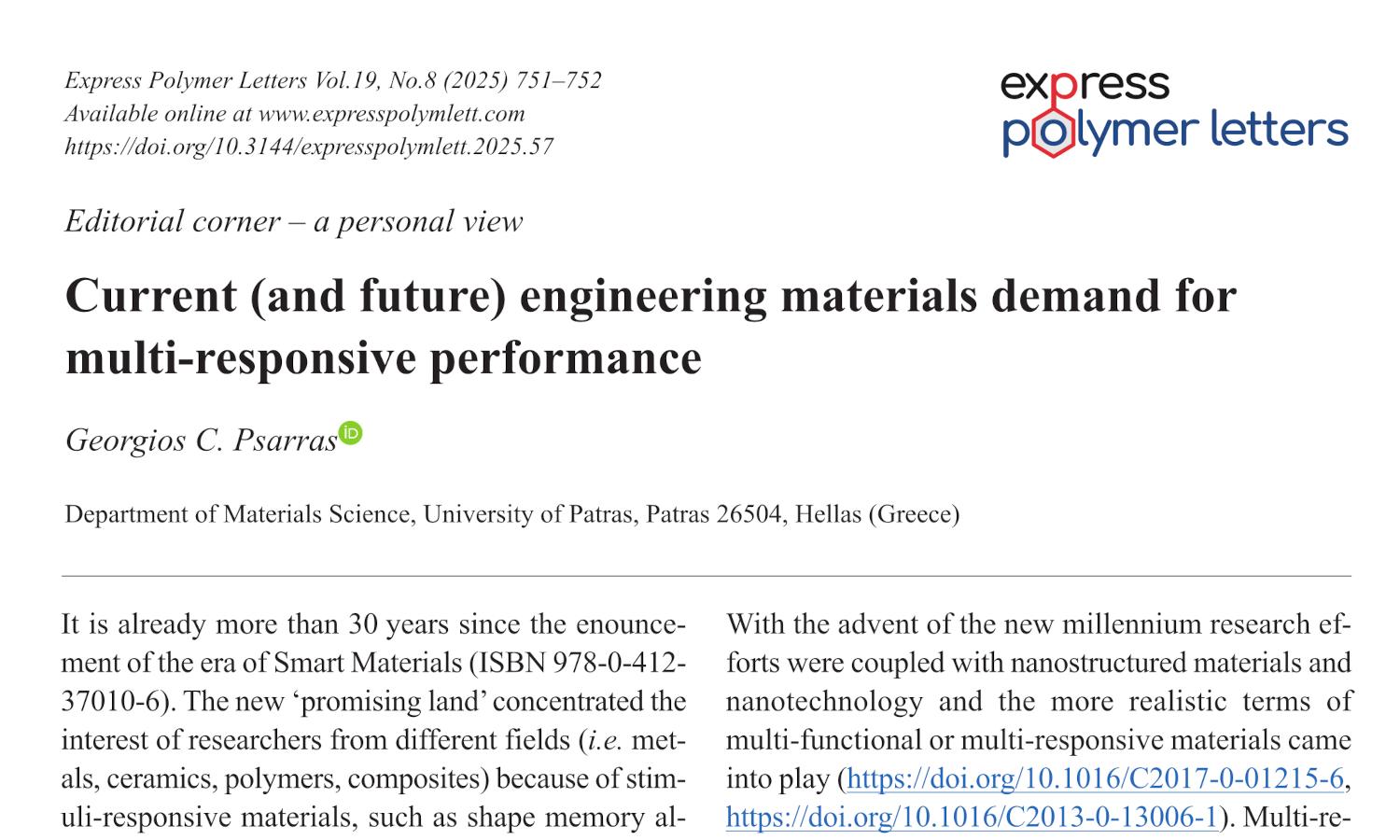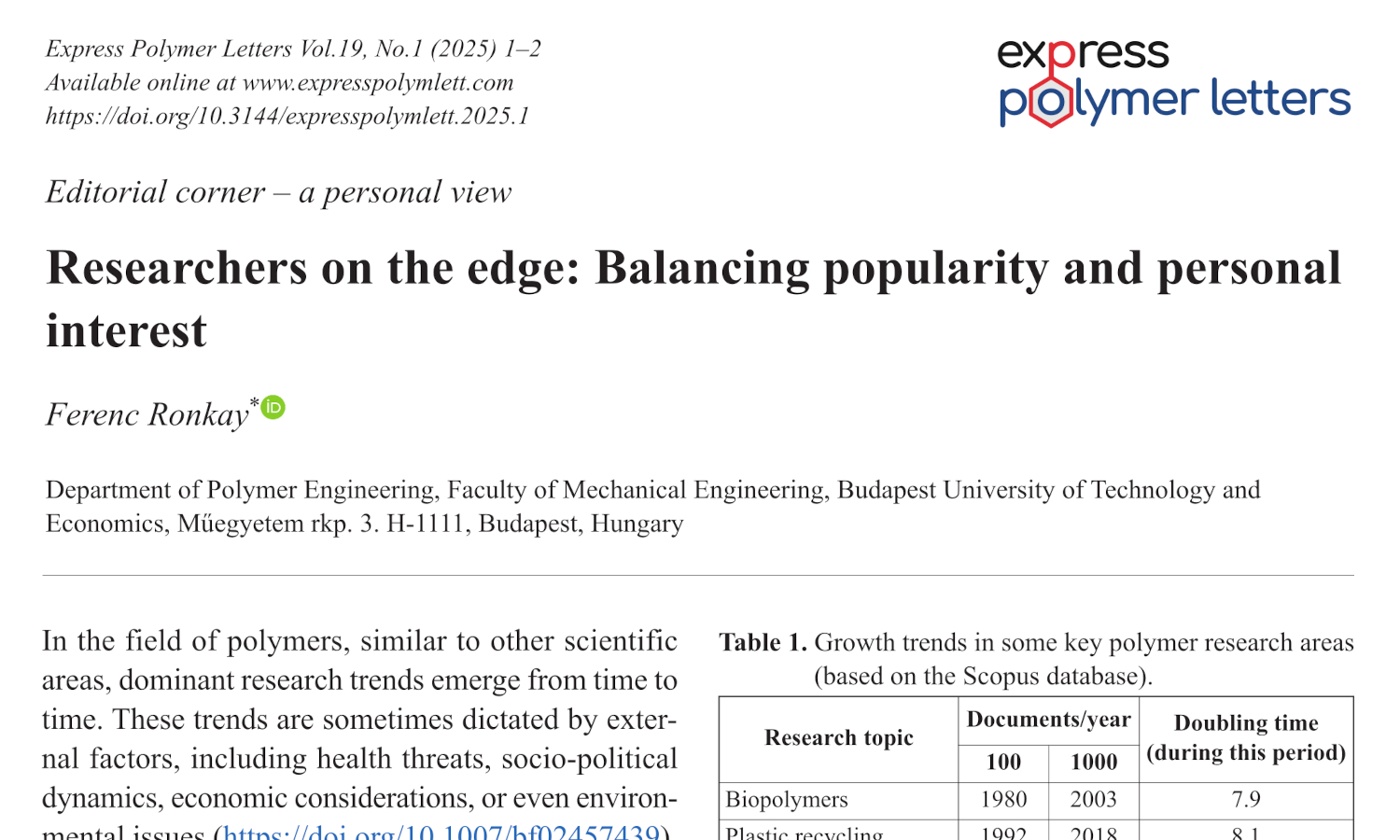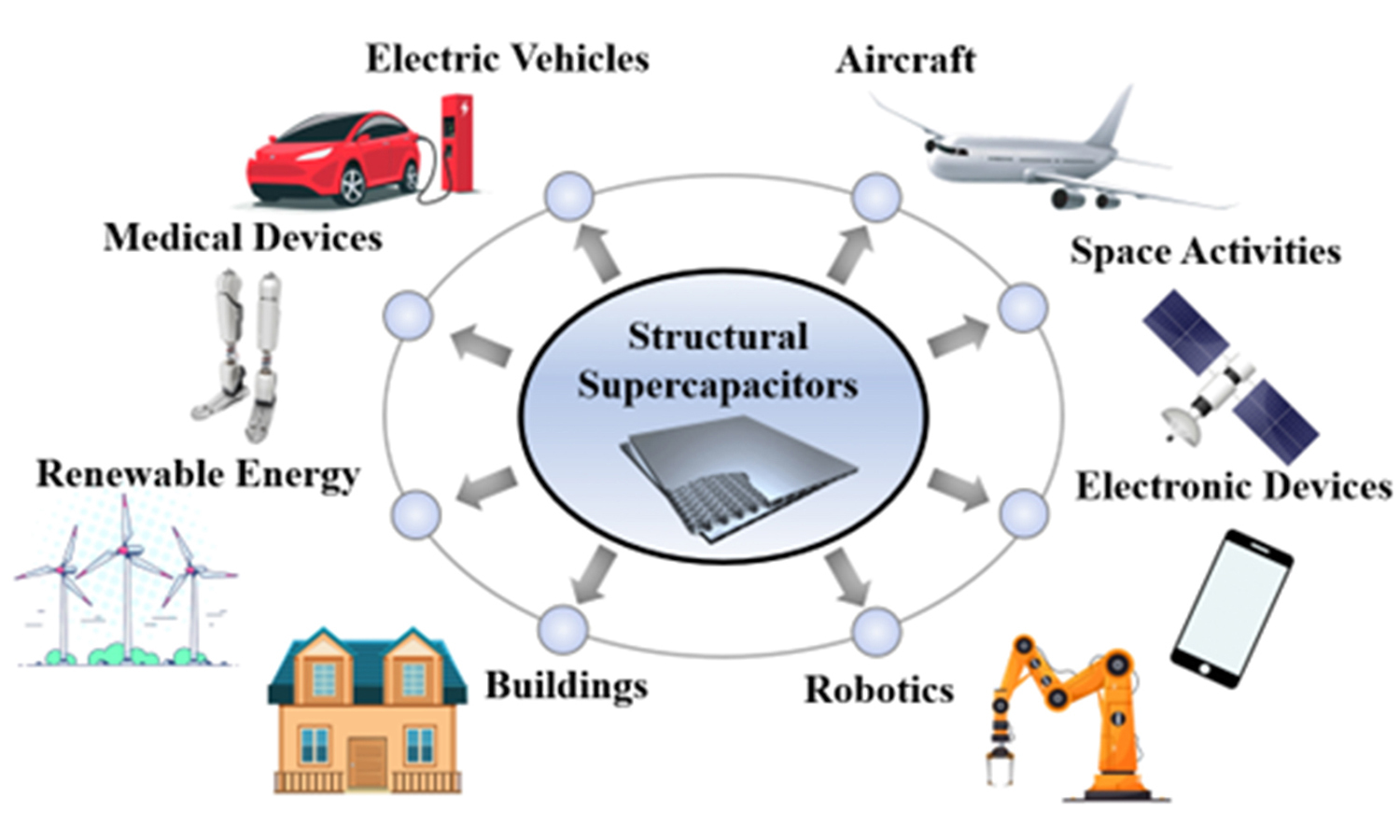Current (and future) engineering materials demand for multi-responsive performance
Georgios C. Psarras
Vol. 19., No.8., Pages 751-752, 2025
DOI: 10.3144/expresspolymlett.2025.57
DOI: 10.3144/expresspolymlett.2025.57
GRAPHICAL ABSTRACT

RELATED ARTICLES
Ferenc Ronkay
Vol. 19., No.1., Pages 1-2, 2025
DOI: 10.3144/expresspolymlett.2025.1
Vol. 19., No.1., Pages 1-2, 2025
DOI: 10.3144/expresspolymlett.2025.1

This is an editorial article. It has no abstract.
Péter Csvila, Tibor Czigány
Vol. 18., No.10., Pages 1023-1038, 2024
DOI: 10.3144/expresspolymlett.2024.78
Vol. 18., No.10., Pages 1023-1038, 2024
DOI: 10.3144/expresspolymlett.2024.78

The article gives an overview of energy storage composites, their materials, manufacturing processes, and applications. Carbon- and metal-based nanoparticles and their relevant properties are presented. We focus on multifunctional structural supercapacitors and their components. Thus, we describe the main structural electrolytes and elements of the structural electrodes. We show that the nanoparticles significantly influence the electrochemical properties of the electrode. For example, carbon-based nanoparticles can achieve low energy density but high power density, while the opposite is true for metal-based nanoparticles. We show that when carbon- and metal-based nanoparticles are used together, a positive synergy is created between them, promoting the development of favorable electrochemical properties in the electrodes. Furthermore, we present structural supercapacitors and possible ways to introduce nanoparticles into the system. Finally, we present a summary of the progress achieved so far and the advancements expected in the future, as well as potential areas where structural supercapacitors could be used.



